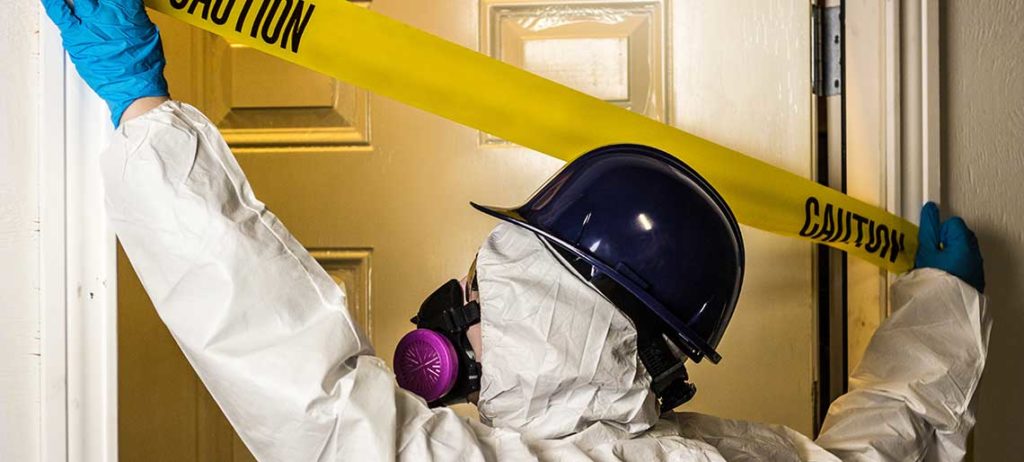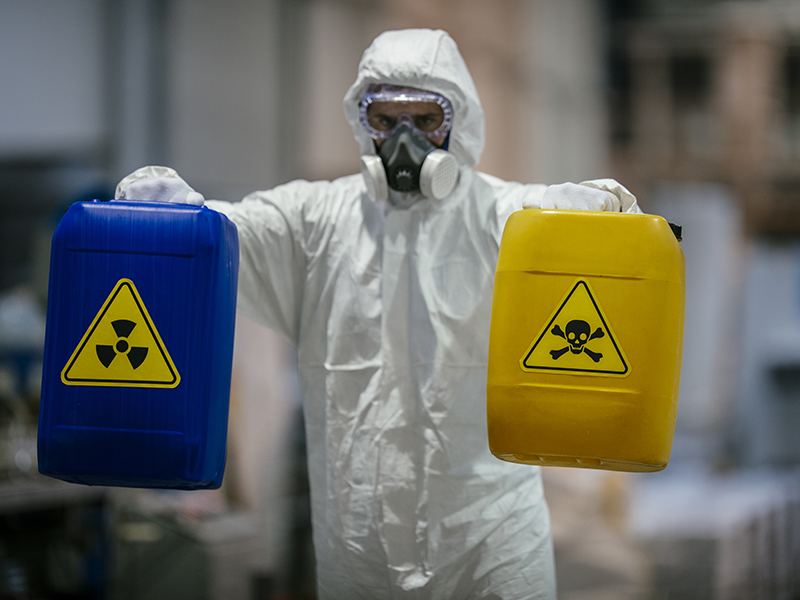Biohazard Removal: Safe Handling and Disposal of Hazardous Materials
Wiki Article
Expert Biohazard Cleaning and Decontamination for Blood, Bodily Fluids, and Hazardous Materials
The potential health and wellness threats connected with direct exposure to biohazards emphasize the crucial demand for meticulous handling and complete cleanup. As we navigate the elaborate landscape of biohazard cleaning, understanding the subtleties of laws, compliance, and the specific tools at play becomes crucial in ensuring a risk-free and extensive decontamination process.
Health And Wellness Threats of Biohazard Exposure
Exposure to biohazards presents substantial wellness risks that can result in serious repercussions for communities and individuals alike. Biohazards include a vast array of organic materials, consisting of blood, physical liquids, mold and mildew, bacteria, viruses, and other potentially infectious materials. When individuals come into contact with these biohazards, whether through accidents, improper handling, or environmental exposure, they face the risk of contracting serious diseases or diseases.One of the primary health risks linked with biohazard direct exposure is the transmission of transmittable conditions. Bloodborne virus such as HIV, liver disease B and C, and different germs can be present in biohazardous materials, posing a straight danger to human health and wellness. Inhaling airborne biohazards like mold spores or coming right into call with polluted surfaces can also bring about respiratory system problems, allergies, and other damaging wellness impacts.
Additionally, biohazard exposure can have lasting health and wellness implications, with some diseases showing up years after the preliminary contact (Blood Cleanup). Therefore, it is critical to focus on proper biohazard cleansing and decontamination to mitigate these wellness threats and guarantee the safety of people and communities

Specialized Training for Biohazard Cleaning
When it comes to managing biohazard cleaning efficiently and safely, specialized training plays a basic role in guaranteeing correct purification procedures are complied with. Biohazard cleaning calls for particular understanding and abilities to properly mitigate dangers connected with bloodborne virus, physical fluids, and dangerous materials. Experts educated in biohazard cleaning undertake rigorous instruction on exactly how to safely manage, get rid of, and deal with biohazardous materials to avoid contamination and direct exposure.Specialized training for biohazard cleaning covers a series of crucial subjects, consisting of correct individual safety tools (PPE) use, bloodborne virus recognition, purification strategies, and contaminated materials disposal methods. Individuals educated in biohazard cleaning are furnished with the needed proficiency to evaluate contamination degrees, recognize prospective dangers, and carry out suitable clean-up procedures in conformity with governing criteria.
Constant training and education are critical in the field of biohazard cleaning to remain updated on the most recent purification technologies, safety protocols, and regulations. By spending in specialized training, biohazard clean-up experts can effectively reply to emergency situation clean-up situations and guard both public wellness and the atmosphere.
Importance of Correct Decontamination Techniques
Making use of appropriate purification methods is important in biohazard cleanup to properly get rid of hazardous products and minimize health threats. Efficient purification not only makes certain the removal of noticeable traces of blood, bodily liquids, and other biohazards however also targets undetectable pathogens that might pose severe health dangers otherwise correctly gotten rid of. By following rigid decontamination procedures, educated professionals can substantially reduce the danger of direct exposure to dangerous bacteria, infections, and microorganisms that might cause illness or infections.Correct purification techniques include the usage of customized equipment and disinfectants that are especially made to neutralize biohazards successfully. Detailed cleaning and disinfection of polluted locations are vital to prevent the spread of pathogens and make sure a secure setting for owners. Additionally, the appropriate disposal of biohazardous waste complying with decontamination procedures is crucial in protecting against contamination of various other surface areas or people.

Equipment and Tools for Safe Cleaning
When dealing with blood, bodily liquids, or unsafe materials, biohazard cleansing professionals depend on specialized equipment to reduce direct exposure threats and completely sanitize the affected location. In addition, biohazard cleaning sets having disinfectants, absorptive products, and biohazard bags are utilized to securely have and dispose of contaminated things.Advanced cleaning tools like hospital-grade anti-bacterials, HEPA-filtered vacuum cleaners, and misting devices are utilized to disinfect surface areas and remove biohazards successfully. Specialized tools such as sharps containers and biohazard garbage disposal bins are utilized to safely handle sharp items and biohazardous waste products. By using the ideal equipment and tools, biohazard cleaning experts can make sure a thorough cleanup process that prioritizes security and lessens health and wellness threats for both employees and owners of the damaged room.
Regulations and Conformity in Biohazard Cleansing
Correct adherence to regulations and compliance criteria is paramount in biohazard cleaning to ensure the safety of both personnel and the environment. Federal government firms such as OSHA (Occupational Safety And Security and Wellness Management) and the EPA (Epa) have established particular guidelines for biohazard cleaning treatments to lessen health and wellness dangers and environmental contamination. These policies cover a series of facets consisting of the handling, transport, and disposal of biohazardous materials, as well as the necessary training and safety devices required for personnel associated with the clean-up process.Biohazard cleaning firms need to stay current with these laws to ensure imp source that their operations fulfill the needed what is viscera cleanup detail safety criteria. Failing to follow these regulations can cause serious consequences, consisting of fines, lawsuit, and endangering the wellness of individuals and the setting. By complying with stringent laws and compliance measures, biohazard cleansing companies can successfully reduce threats and guarantee a comprehensive and secure clean-up procedure for all parties entailed.
Conclusion
In verdict, biohazard cleaning and purification require specific training, correct techniques, and adherence to laws. Exposure to blood, physical liquids, and dangerous products poses considerable wellness risks, making it important to make use of the best devices and devices for safe clean-up. By complying with rigorous protocols and guidelines, experts can properly reduce the risks linked with biohazard direct exposure and ensure the security of both themselves and others.
As we browse the detailed landscape of biohazard cleaning, understanding the nuances of guidelines, conformity, and the customized tools at play becomes crucial in making certain a safe and comprehensive purification procedure. (Blood Cleanup)
When it comes to taking care of biohazard cleaning successfully and securely, specialized training plays a basic duty in ensuring proper purification treatments are adhered to.Making use of correct purification strategies is critical in biohazard cleaning to properly remove unsafe products and check it out lessen health threats. In addition, biohazard cleansing sets including disinfectants, absorbent products, and biohazard bags are utilized to safely include and get rid of of polluted items.
Federal government companies such as OSHA (Occupational Security and Health Management) and the EPA (Environmental Security Company) have developed particular guidelines for biohazard cleaning procedures to reduce wellness dangers and environmental contamination.
Report this wiki page